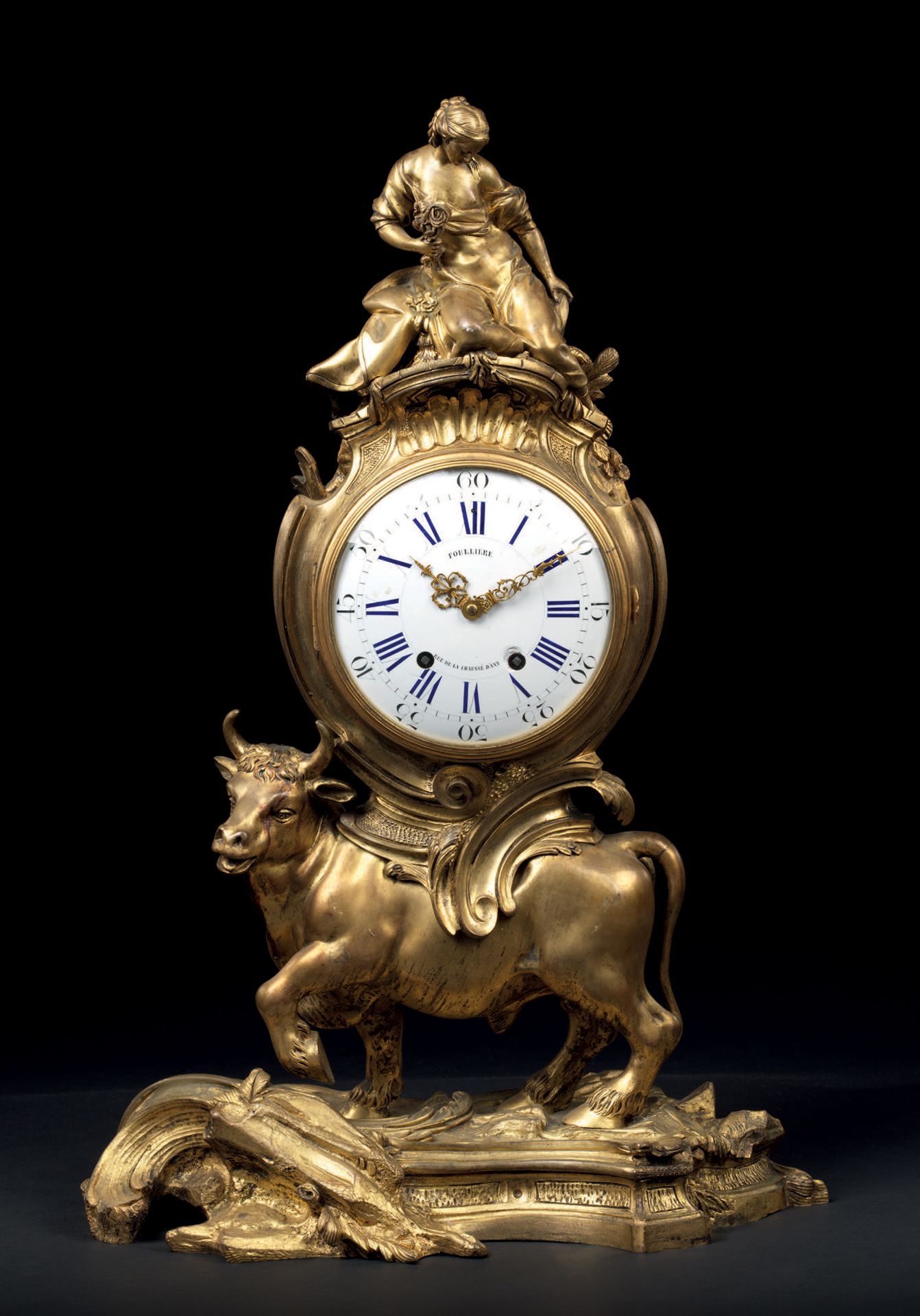Description
D'après JEAN-JOSEPH DE SAINT-GERMAIN (Paris, 1719-1791)
LOUIS XV CLOCK " AU TAUREAU " OR " L'ENLÈVEMENT D'EUROPE Paris, Louis XV period, circa 1760 Gilt bronze; enamel; brass and glass Later period movement H. 17 cm, W. 50 cm, D. 22 cm This "bull" clock takes us back to Louis XV, during whose reign animal clocks were very popular. The capital's bronziers integrated the movement in a rocaille decoration, most often carried by an exotic animal or by a bull when, accompanied by a graceful female figure, it could be likened to Zeus. According to ancient mythology, Zeus coveted Europa, the daughter of the king of Tyre in Phoenicia. She was very beautiful and liked to walk on the beach. The powerful God had the idea to transform himself into a beautiful white bull to attract her to him. As soon as she saw the animal, Europe approached to caress it. He lay down, invited her to climb on his back and fled across the sea to Crete. Thus Zeus kidnapped Europa. The greatest bronzers of the 18th century seized upon the myth of the Abduction of Europa. The Louvre, the Fitzwilliam Museum and the Getty in Malibu have models in patinated and gilded bronze or solely in gilded bronze, signed or attributed to Osmond or Saint-Germain (fig. 1). Jean-Joseph de Saint-Germain, who was awarded a master's degree in 1748, produced several variants. The one with nymph and love at the base is the model of our bull (fig. 2). The rest of our clock is based on the simplified version of the master (fig. 3). Europa, with her chest uncovered, is sitting on a heavy drapery falling on the clock carried by the bull alone on a rocaille terrace. In our copy, the young woman holds a bouquet of flowers in her hand.
76
D'après JEAN-JOSEPH DE SAINT-GERMAIN (Paris, 1719-1791)
